Top Negative Balance Protection Brokers for 2026
We found 11 online brokers that are appropriate for Trading Negative Balance Protection.
Best Negative Balance Protection Brokers Guide
Analysis by Andrew Blumer, Updated and fact-checked by Senad Karaahmetovic, Last updated – December 02, 2025
Negative Balance Protection Brokers
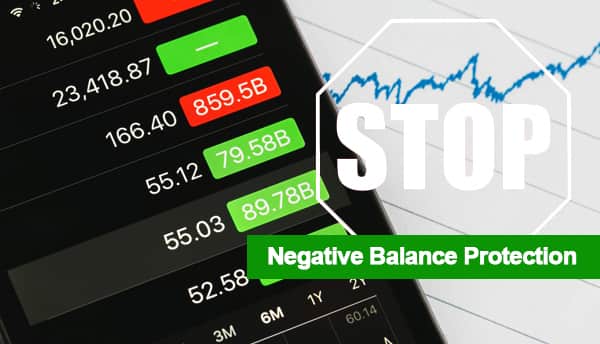
Negative Balance Protection (NBP) is a crucial safeguard offered by some brokers, designed to prevent traders from losing more money than they have in their accounts. In highly volatile markets, unexpected price swings can lead to rapid losses, sometimes exceeding the available account balance. Without NBP, traders would be responsible for covering these additional losses, potentially leaving them in debt.
With Negative Balance Protection, however, a trader’s losses are limited to their initial deposit. This means that even in extreme market conditions, where sudden price gaps or leverage amplify losses, the broker ensures that the account balance cannot drop below zero. Essentially, this feature acts as a financial safety net, providing traders with peace of mind and reducing the risks associated with highly leveraged trading.
As a trader, I understand that while financial markets offer significant profit potential, they also come with inherent risks. Market volatility, especially in forex and stock trading, can make it difficult to maintain a balanced account. While tools like stop-loss orders help manage risk, they don't always guarantee full protection against negative balances—this is where Negative Balance Protection becomes essential.
Simply put, NBP is a policy implemented by brokers to protect their clients from owing more than they invest. Choosing a broker that offers this feature ensures that even if a trade goes against you, the maximum you can lose is your initial deposit. For traders navigating unpredictable markets, this protection is invaluable in maintaining financial stability and avoiding unnecessary debt.
Different regulators have varying stances on Negative Balance Protection. In the UK, for example, the Financial Conduct Authority (FCA) mandates NBP for retail clients trading CFDs (FCA Handbook - COBS 22.5.17). Similarly, the European Securities and Markets Authority (ESMA) requires EU brokers to provide NBP to retail clients. However, other regulators like Australia's ASIC or New Zealand's FMA currently do not mandate NBP, leaving the decision to individual brokers.
Best Brokers That Offer Negative Balance Protection
Several well-regarded brokers offer Negative Balance Protection, ensuring that traders do not lose more than their initial deposit. Among the top brokers providing this feature are IC Markets, RoboForex, eToro, XTB, and XM. Additionally, brokers regulated by the Financial Conduct Authority (FCA) in the UK are required to provide negative balance protection, further enhancing trader security.
Finding the right broker with Negative Balance Protection can be challenging, as traders must also consider other crucial factors. A broker should not only offer protection against negative balances but also provide a well-rounded trading experience. Key considerations include a diverse selection of tradable financial instruments, flexible funding and withdrawal options, reliable customer service, and strong regulatory oversight. Choosing a broker that aligns with both your risk management needs and overall trading strategy is essential for long-term success.
Top Picks for Negative Balance Protection Trading
Finding the best Negative Balance Protection brokers requires evaluating both essential and specialized features. A reliable broker should not only safeguard traders from losing more than their deposit but also provide a well-rounded trading experience. Factors such as low latency execution, competitive spreads, strong regulation, and user-friendly platforms distinguish top-tier brokers.
IC Markets Negative Balance Protection
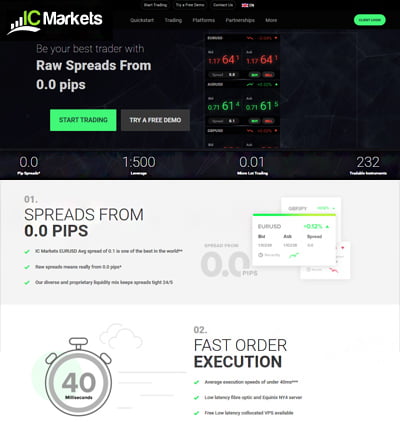
IC Markets is a top choice for traders seeking Negative Balance Protection alongside ultra-low latency execution and tight spreads. It supports MT4, MT5, cTrader, and TradingView, ensuring versatility across different trading strategies. With an average execution speed of just 40ms, traders benefit from rapid order execution, crucial for scalping and day trading. IC Markets processes over $29 billion in daily trading volume, reinforcing its reputation as a high-liquidity broker. Regulated by the FSA, it offers a secure and efficient environment for traders looking for reliability and advanced trading tools.
RoboForex Negative Balance Protection
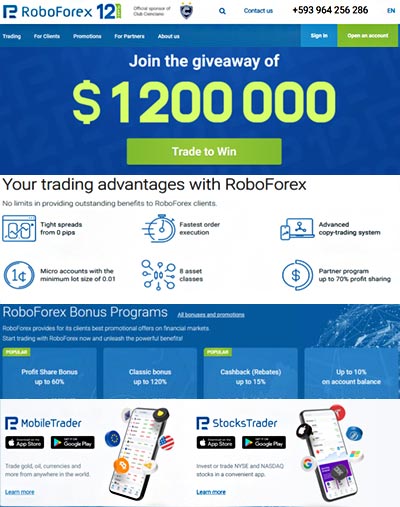
RoboForex caters to traders looking for high leverage, ultra-low spreads, and customizable trading options. With spreads starting at 0.0 pips and leverage up to 1:2000, it is suited for experienced traders who want flexibility. The platform supports MT4, MT5, and cTrader, along with automated trading and Expert Advisor (EA) scripting. Traders benefit from negative balance protection, ensuring they never lose more than their deposit. RoboForex is a strong choice for those who prioritize fast execution, advanced tools, and a highly customizable trading experience.
eToro Negative Balance Protection

eToro stands out for its unique social trading features, allowing traders to copy successful strategies from experienced investors. With over 30 million users, eToro provides a community-driven environment where traders can interact, share insights, and follow market leaders. The platform is regulated by FCA, CySEC, and ASIC, ensuring strong compliance and security. Traders benefit from negative balance protection, user-friendly execution, and a diverse asset selection, making eToro an excellent option for beginners and those interested in copy trading.
XTB Negative Balance Protection
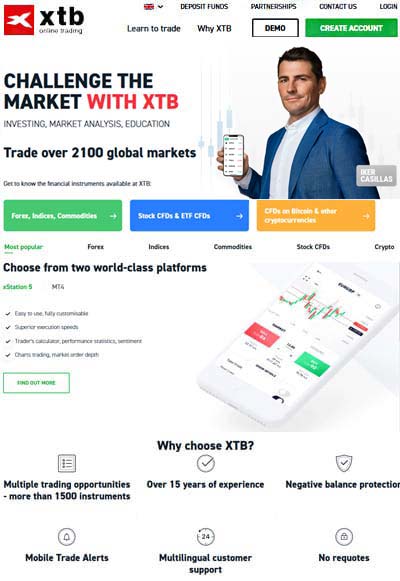
XTB is known for its in-depth market analysis tools and educational resources, making it ideal for traders who rely on research. The platform provides access to over 2,100 financial instruments, including forex, commodities, indices, and CFDs. With FCA and CySEC regulation, XTB ensures a secure trading environment with negative balance protection in place. Its intuitive xStation platform offers advanced charting tools, rapid execution, and seamless mobile trading. XTB is a great option for both beginners and experienced traders looking for a research-heavy platform.
XM Negative Balance Protection
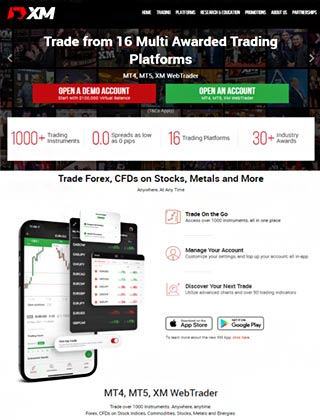
XM is widely recognized for its exceptional customer support and diverse trading options. It offers MT4 and MT5 platforms with a strong focus on execution speed and reliability. XM provides access to a broad range of assets, including forex, stocks, commodities, and cryptocurrencies. With negative balance protection and regulation from ASIC, CySEC, and IFSC, traders can operate with confidence. XM's customer-centric approach, combined with its reliable trading conditions, makes it an excellent choice for those who value support and accessibility.
Selecting the right Negative Balance Protection broker depends on individual trading needs. While all the brokers listed here provide protection against negative balances, traders should also consider factors such as platform features, asset selection, regulation, and trading conditions. It may be beneficial to explore multiple platforms before making a decision. Opting for brokers regulated by top-tier European authorities ensures both security and credibility in your trading journey.
Key Factors in Choosing a Reliable Broker
Broker History and Reputation
A broker's operational history and reputation are critical when making a selection. A broker with a strong financial background and transparent operations is less likely to withhold your funds or engage in unethical practices. Conduct thorough research by reading user reviews, regulatory records, and legal cases to identify any past issues such as financial mismanagement, regulatory sanctions, or lawsuits.
Regulatory Compliance
Ensuring your broker is licensed and regulated by a reputable authority is essential for financial security. Different jurisdictions impose varying regulations, affecting how brokers operate. Strong regulatory oversight ensures that brokers segregate client funds from their operational accounts, reducing the risk of financial mishandling or fraud.
Withdrawal and Funding Policies
Examine a broker’s deposit and withdrawal processes to ensure smooth and timely transactions. While most brokers offer bank transfers, credit cards, and other funding methods, policies on minimum deposit and withdrawal limits can vary. Choosing a broker with fast and hassle-free withdrawals is crucial for efficient fund management and trading flexibility.
Evaluating these factors will help you select a broker that aligns with your trading needs while ensuring security, transparency, and accessibility.
Official Stances on Negative Balance Protection from Financial Regulators
Regulations on negative balance protection vary by jurisdiction, so it’s important to check the latest updates from the relevant regulatory bodies overseeing your trading account.
Financial Conduct Authority (FCA) Broker Negative Balance Protection

Financial Conduct Authority (FCA), UK: The FCA enforces strict measures to protect retail traders, requiring regulated brokers to implement negative balance protection or cover potential exposure risks using their own capital.
In 2019, the FCA introduced regulations mirroring the ESMA’s restrictions on CFDs, ensuring that traders cannot lose more than their account balance. These rules apply to all MiFID investment firms offering CFDs or similar instruments.
Additionally, the FCA mandates that funds in a trader's account designated for regulated speculative investments must be protected. However, non-trading funds and other assets are not covered under these rules.
European Securities and Markets Authority (ESMA) Broker Negative Balance Protection

European Securities and Markets Authority (ESMA): ESMA enforces negative balance protection across a trader’s entire CFD portfolio rather than individual trades. This ensures that no matter how volatile the market gets, a trader's total account balance cannot fall below zero. This rule is part of ESMA’s broader measures to enhance investor protection within the EU.
Cyprus Securities and Exchange Commission (CySEC) Broker Negative Balance Protection

Cyprus Securities and Exchange Commission (CySEC): CySEC was among the first regulators to introduce negative balance protection in 2016, later reinforcing its application in 2017. Unlike ESMA, CySEC applies protection on a per-account basis, meaning funds from one leveraged position can be used to offset losses from another within the same broker. However, a trader's overall account balance cannot go negative.
As part of the EU regulatory framework, CySEC’s rules align with ESMA’s standards. In 2019, CySEC made ESMA’s CFD restrictions permanent, further strengthening trader protections.
All brokers listed in this article provide trading accounts with negative balance protection, ensuring traders cannot lose more than their deposited funds.

Negative Balance Protection Rise to Popularity
Negative Balance Protection (NBP) is an important safety feature for new traders, becoming widely recognized after major market events like the ‘Swiss Franc crisis’ in 2015 and the more recent ‘oil price crash’ in 2020. During these events, sudden and extreme price movements led to traders unexpectedly owing more than their initial investment, causing serious financial difficulties.
In 2015, the Swiss National Bank suddenly removed its currency peg to the Euro, resulting in rapid and severe price fluctuations. Similarly, in 2020, oil prices briefly dropped below zero, surprising even experienced traders. Without negative balance protection, traders faced substantial debts beyond their initial investments.
Negative Balance Protection prevents this scenario by limiting your losses strictly to your deposited funds. It ensures that even in volatile markets, you can never owe more money than you initially invested. This safeguard shifts the risk of extreme losses from you, the trader, to your broker allowing you to trade with greater confidence and peace of mind, especially as you start your trading journey.
Is Negative Balance Protection Important?

Negative Balance Protection (NBP) is essential for traders, particularly those in high-risk markets like Forex and CFDs. These markets are highly volatile, and leverage can magnify both gains and losses. Without NBP, a sharp market move in the wrong direction could wipe out a trader’s entire account and leave them owing additional funds to their broker. This scenario can be devastating, especially for individual traders who may not have the resources to cover unexpected debts.
One of the key advantages of NBP is its role in risk management. Knowing that losses are limited to the funds in an account allows traders to engage in the markets with greater confidence, as they are not at risk of financial ruin due to market fluctuations. It also prevents traders from falling into debt, as losses cannot exceed the initial deposit. This is particularly crucial for retail traders who might not fully understand the dangers of leverage or have the financial capacity to recover from extreme market events.
By enforcing NBP, brokers encourage responsible trading behavior. Traders are more likely to consider the risks before entering positions, as they understand that, while their losses are capped, their strategies still need careful planning. Additionally, NBP contributes to overall market confidence, as investors are more willing to participate when they know their potential losses are limited. In recent years, financial regulators in various jurisdictions have mandated NBP to protect retail investors, reinforcing its importance as a standard feature in brokerage services.
Negative Balance Protection Example
Imagine you have a trading account with $10,000 and decide to trade EUR/USD using a 50:1 leverage. This means you can control a $500,000 position with your $10,000 capital, amplifying both potential gains and losses.
You open a long position, expecting the euro to rise against the US dollar. However, the market moves sharply against you, and your position starts losing value. Due to leverage, even a small unfavorable shift can result in significant losses.
In this scenario, your losses reach $15,000—more than your initial deposit. Without negative balance protection, your account would go into negative territory, leaving you owing your broker an additional $5,000 beyond your original $10,000 investment.
With negative balance protection, your broker caps your losses at your deposited amount. Instead of ending up in debt, your balance is reset to zero, and the broker absorbs the remaining $5,000 loss. This safeguard prevents traders from owing more than they invest and protects them from financial ruin due to extreme market movements.
What Happens If Your Trading Account Goes Negative?
Your trading account can go negative if you don’t have proper risk management in place, particularly a stop-loss mechanism. Without it, losses can spiral beyond your initial deposit, leaving you owing money to your broker.
Many traders are unaware that extreme market volatility can push their accounts into the red. Rapid price swings can trigger stop-loss orders too late or bypass them entirely, leading to losses that exceed available funds.
When this happens, traders may have to cover the deficit by depositing more money, potentially leading to significant financial strain. However, with negative balance protection, your broker ensures that your losses are capped at your deposited amount. This safeguard prevents traders from owing more than they invested, offering crucial financial security in volatile markets.

Benefits of Negative Balance Protection
| Benefit | Description |
|---|---|
| Financial Safety | NBP ensures traders cannot lose more than their deposited funds, preventing debt accumulation. Example: If a trader faces a sharp market drop, NBP prevents losses from exceeding their account balance. |
| Ideal for Beginners | NBP is perfect for new traders, as it removes the fear of massive losses when starting out. Example: A novice trader can experiment with strategies knowing NBP limits any potential loss to what they have deposited. |
| Encourages Responsible Trading | NBP helps promote disciplined trading by capping losses to the available funds, discouraging reckless risk-taking. Example: A trader employing aggressive tactics will be protected by NBP, which only allows losses up to their account balance. |
| Boosts Market Confidence | NBP increases traders' confidence, knowing that they are safeguarded against catastrophic losses, which in turn boosts overall market participation. Example: Even during volatile periods, traders feel secure and continue trading, thanks to NBP. |
| Supports Diverse Strategies | With NBP, traders can explore a variety of trading strategies without the worry of incurring unmanageable losses. Example: Whether trading conservatively or aggressively, NBP protects traders by limiting losses to their deposited amount. |
| Prevents Irredeemable Debt | NBP stops traders from accumulating debt that could lead to long-term financial issues with their brokers. Example: If market conditions worsen, NBP ensures that traders will never owe more than what they have in their trading account. |
Negative Balance Protection and Margin Calls
A margin call occurs when your account balance drops too low due to trading losses, prompting your broker to request additional funds. If you don't deposit more, the broker may liquidate your positions often at unfavorable prices to recover their money.
Negative Balance Protection acts as a safety net, ensuring that even in extreme market swings, you cannot lose more than your deposited funds. Unlike a standard margin call, where losses could exceed your balance, this feature prevents traders from owing money to their broker, offering essential financial security in volatile markets.
STP Brokers and Negative Balance Protection
I’ve found it helpful to understand how negative balance protection (NBP) applies differently depending on the broker type. For instance, when I trade with an STP broker, my trades go directly to liquidity providers in the wider market. This means my broker isn't directly controlling my positions they just pass them along.
Let me give you a quick example: Suppose I trade during a sudden market event like when oil prices went negative in 2020. If my account balance wasn't enough to cover those unexpected losses, an STP broker might still owe money to their liquidity provider on my behalf. This puts both me and my broker at risk. So, unlike dealing with market-maker brokers, STP brokers can't always guarantee negative balance protection.
This reality highlights why choosing the right broker and understanding their risk management policies is critical, especially when trading in volatile markets.
Negative Balance Protection Brokers Verdict
Negative Balance Protection is an essential safeguard in trading, ensuring that traders cannot lose more than their deposited funds. This became particularly significant after the 2015 Swiss Franc crisis, which left many traders owing large sums to brokers. Today, financial regulators like the FCA, ESMA, and CySEC enforce rules to protect retail investors from such financial risks.
The primary benefit of Negative Balance Protection is that it eliminates the risk of debt, preventing traders from owing money beyond their initial investment. It also promotes responsible trading, increases market confidence, and encourages the use of disciplined risk management strategies. In leveraged trading, where losses can accumulate rapidly, this protection is a crucial safety net.
Negative Balance Protection works alongside margin calls, which notify traders when their account funds are too low. Without this safeguard, traders may experience devastating financial losses in fast-moving markets. While retail traders benefit from this protection, STP brokers do not receive the same level of security from their Liquidity Providers (LPs), making risk management essential for these brokers.
When all is said and done, whether you're an experienced trader or a beginner, choosing a broker that offers Negative Balance Protection can prevent unexpected financial risks. In volatile markets, having this safeguard ensures you never lose more than you can afford, making trading a more secure and sustainable endeavor.
We have conducted extensive research and analysis on over multiple data points on Negative Balance Protection Brokers to present you with a comprehensive guide that can help you find the most suitable Negative Balance Protection Brokers. Below we shortlist what we think are the best negative balance protection brokers after careful consideration and evaluation. We hope this list will assist you in making an informed decision when researching Negative Balance Protection Brokers.
Reputable Negative Balance Protection Brokers Checklist
Selecting a reliable and reputable online Negative Balance Protection trading brokerage involves assessing their track record, regulatory status, customer support, processing times, international presence, and language capabilities. Considering these factors, you can make an informed decision and trade Negative Balance Protection more confidently.
Selecting the right online Negative Balance Protection trading brokerage requires careful consideration of several critical factors. Here are some essential points to keep in mind:
- Ensure your chosen Negative Balance Protection broker has a solid track record of at least two years in the industry.
- Verify that the Negative Balance Protection broker has a customer support team of at least 15 members responsive to queries and concerns.
- Check if the Negative Balance Protection broker operates under the regulatory framework of a jurisdiction that can hold it accountable for any misconduct or resolve disputes fairly and impartially.
- Ensure that the Negative Balance Protection broker can process deposits and withdrawals within two to three days, which is crucial when you need to access your funds quickly.
- Look for Negative Balance Protection brokers with an international presence in multiple countries, offering its clients local seminars and training programs.
- Ensure the Negative Balance Protection broker can hire staff from diverse locations worldwide who can communicate fluently in your local language.
Our team have listed brokers that match your criteria for you below. All brokerage data has been summarised into a comparison table. Scroll down.
Compare Key Features of Negative Balance Protection Brokers in Our Brokerage Comparison Table
When choosing a broker for negative balance protection trading, it's essential to compare the different options available to you. Our negative balance protection brokerage comparison table below allows you to compare several important features side by side, making it easier to make an informed choice.
- Minimum deposit requirement for opening an account with each negative balance protection broker.
- The funding methods available for negative balance protection with each broker.
- The types of instruments you can trade with each negative balance protection broker, such as forex, stocks, commodities, and indices.
- The trading platforms each negative balance protection broker provides, including their features, ease of use, and compatibility with your devices.
- The spread type (if applicable) for each negative balance protection broker affects the cost of trading.
- The level of customer support each negative balance protection broker offers, including their availability, responsiveness, and quality of service.
- Whether each negative balance protection broker offers Micro, Standard, VIP, or Islamic accounts to suit your trading style and preferences.
By comparing these essential features, you can choose a negative balance protection broker that best suits your needs and preferences for negative balance protection. Our negative balance protection broker comparison table simplifies the process, allowing you to make a more informed decision.
Top 15 Negative Balance Protection Brokers of 2026 compared
Here are the top Negative Balance Protection Brokers.
Compare negative balance protection brokers for min deposits, funding, used by, benefits, account types, platforms, and support levels. When searching for a negative balance protection broker, it's crucial to compare several factors to choose the right one for your negative balance protection needs. Our comparison tool allows you to compare the essential features side by side.
All brokers below are negative balance protection brokers. Learn more about what they offer below.
You can scroll left and right on the comparison table below to see more negative balance protection brokers that accept negative balance protection clients.
| Broker |
IC Markets

|
Roboforex

|
eToro

|
XTB

|
XM

|
Pepperstone

|
AvaTrade

|
FP Markets

|
EasyMarkets

|
SpreadEx

|
FXPro

|
|---|---|---|---|---|---|---|---|---|---|---|---|
| Rating | |||||||||||
| Regulation | International Capital Markets Pty Ltd (Australia) (ASIC) Australian Securities & Investments Commission Licence No. 335692, Seychelles Financial Services Authority (FSA) (SD018), IC Markets (EU) Ltd (CySEC) Cyprus Securities and Exchange Commission with License No. 362/18, Capital Markets Authority(CMA) Kenya IC Markets (KE) Ltd, Securities Commission of The Bahamas (SCB) IC Markets (Bahamas) Ltd | RoboForex Ltd is authorised and regulated by the Financial Services Commission (FSC) of Belize under licence No. 000138/32, under the Securities Industry Act 2021, RoboForex Ltd is an (A category) member of The Financial Commission, also RoboForex Ltd is a participant of the Financial Commission Compensation Fund | FCA (Financial Conduct Authority) eToro (UK) Ltd (FCA reference 583263), eToro (Europe) Ltd CySEC (Cyprus Securities Exchange Commission), ASIC (Australian Securities and Investments Commission) eToro AUS Capital Limited ASIC license 491139, CySec (Cyprus Securities and Exchange Commission under the license 109/10), FSAS (Financial Services Authority Seychelles) eToro (Seychelles) Ltd license SD076, eToro (ME) Limited (ADGM) Abu Dhabi (UAE) number 220073, eToro (Europe) Ltd (AMF) Autorité des marchés financiers as a digital assets provider France | FCA (Financial Conduct Authority reference 522157) XTB Limited, CySEC (Cyprus Securities and Exchange Commission reference 169/12), DFSA (Dubai Financial Services Authority XTB MENA Limited licensed 8 July 2021), FSA (Financial Services Authority Seychelles license number SD148), FSCA (Financial Sector Conduct Authority XTB Africa (Pty) Ltd licensed 10 August 2021), KNF (Komisja Nadzoru Finansowego Polish Financial Supervision Authority) | Financial Sector Conduct Authority (FSCA) (49976) XM ZA (Pty) Ltd, Financial Services Commission (FSC) (000261/27) XM Global Limited, Cyprus Securities and Exchange Commission (CySEC) (license 120/10) Trading Point of Financial Instruments Ltd, Australian Securities and Investments Commission (ASIC) (number 443670) Trading Point of Financial Instruments Pty Ltd | Financial Conduct Authority (FCA), Australian Securities and Investments Commission (ASIC), Cyprus Securities and Exchange Commission (CySEC), Federal Financial Supervisory Authority (BaFin), Dubai Financial Services Authority (DFSA), Capital Markets Authority of Kenya (CMA), Pepperstone Markets Limited is incorporated in The Bahamas (number 177174 B), Licensed by the Securities Commission of The Bahamas (SCB) number SIA-F217 | Australian Securities and Investments Commission (ASIC) Ava Capital Markets Australia Pty Ltd (406684), South African Financial Sector Conduct Authority (FSCA) Ava Capital Markets Pty Ltd (45984), Financial Services Agency (Japan FSA) Ava Trade Japan K.K. (1662), Financial Futures Association of Japan (FFAJ) Ava Trade Japan K.K. (1574), Abu Dhabi Global Markets (ADGM) / Financial Regulatory Services Authority (FRSA) Ava Trade Middle East Ltd (190018), Central Bank of Ireland (C53877) AVA Trade EU Ltd, Polish Financial Supervision Authority (KNF) AVA Trade EU Ltd (branch authorisation), British Virgin Islands Financial Services Commission (BVI) Ava Trade Markets Ltd (SIBA/L/13/1049), Israel Securities Authority (ISA) ATrade Ltd (514666577) | CySEC (Cyprus Securities and Exchange Commission) (371/18), ASIC AFS (Australian Securities and Investments Commission) (286354), FSP (Financial Sector Conduct Authority in South Africa) (50926), Financial Services Authority Seychelles (FSA) (SD 130) | Easy Forex Trading Ltd is regulated by CySEC (License Number 079/07). Easy Forex Trading Ltd is the only entity that onboards EU clients, easyMarkets Pty Ltd is regulated by ASIC (AFS License No. 246566), EF Worldwide Ltd in Seychelles is regulated by FSA (License Number SD056), EF Worldwide Ltd in the British Virgin Islands is regulated by FSC (License Number SIBA/L/20/1135) | FCA (Financial Conduct Authority) (190941), Gambling Commission (Great Britain) (8835), licence in Ireland as remote bookmaker for fixed odds betting licence number 1016176 | FCA (Financial Conduct Authority) (509956), CySEC (Cyprus Securities and Exchange Commission) (078/07), FSCA (Financial Sector Conduct Authority) (45052), SCB (Securities Commission of The Bahamas) (SIA-F184), FSA (Financial Services Authority of Seychelles) (SD120) |
| Min Deposit | 200 | 10 | 50 | No minimum deposit | 5 | No minimum deposit | 100 | 100 | 25 | No minimum deposit | 100 |
| Funding |
|
|
|
|
|
|
|
|
|
|
|
| Used By | 200,000+ | 730,000+ | 40,000,000+ | 1,000,000+ | 10,000,000+ | 400,000+ | 400,000+ | 200,000+ | 250,000+ | 60,000+ | 7,800,000+ |
| Benefits |
|
|
|
|
|
|
|
|
|
|
|
| Accounts |
|
|
|
|
|
|
|
|
|
|
|
| Platforms | MT5, MT4, MetaTrader WebTrader, Mobile Apps, iOS (App Store), Android (Google Play), MetaTrader iPhone/iPad, MetaTrader Android Google Play, MetaTrader Mac, cTrader, cTrader Web, cTrader iPhone/iPad, cTrader iMac, cTrader Android Google Play, cTrader Automate, cTrader Copy Trading, TradingView, Virtual Private Server, Trading Servers, MT4 Advanced Trading Tools, IC Insights, Trading Central | MT4, MT5, R Mobile Trader, R StocksTrader, WebTrader, Mobile Apps, iOS (App Store), Android (Google Play), Windows | eToro Trading App, Mobile Apps, iOS (App Store), Android (Google Play), CopyTrading, Web | MT4, Mirror Trader, Web Trader, Tablet, Mobile Apps, iOS (App Store), Android (Google Play) | MT5, MT5 WebTrader, XM Apple App for iPhone, XM App for Android Google Play, Tablet: MT5 for iPad, MT5 for Android Google Play, XM App for iPad, XM App for iOS (App Store), Android (Google Play), Mobile Apps | MT4, MT5, cTrader,WebTrader, TradingView, Windows, Mobile Apps, iOS (App Store), Android (Google Play) | MT4, MT5, Web Trading, AvaTrade App, AvaOptions, Mac Trading, AvaSocial, Mobile Apps, iOS (App Store), Android (Google Play) | MT4, MT5, TradingView, cTrader, WebTrader, Mobile Trader, Mobile Apps, iOS (App Store), Android (Google Play) | easyMarkets App, Mobile Apps, iOS (App Store), Android (Google Play), Web Platform, TradingView, MT4, MT5 | Web, Mobile Apps, iOS (App Store), Android (Google Play), iPad App, iPhone App, TradingView | MT4, MT5, cTrader, FxPro WebTrader, FxPro Mobile Apps, iOS (App Store), Android (Google Play) |
| Support |
|
|
|
|
|
|
|
|
|
|
|
| Learn More |
Sign
Up with icmarkets |
Sign
Up with roboforex |
Sign
Up with etoro |
Sign
Up with xtb |
Sign
Up with xm |
Sign
Up with pepperstone |
Sign
Up with avatrade |
Sign
Up with fpmarkets |
Sign
Up with easymarkets |
Sign
Up with spreadex |
Sign
Up with fxpro |
| Risk Warning | Losses can exceed deposits | Losses can exceed deposits | 46% of retail investor accounts lose money when trading CFDs with this provider. | 69% - 80% of retail investor accounts lose money when trading CFDs with this provider. You should consider whether you understand how CFDs work and whether you can afford to take the high risk of losing your money. | CFDs are complex instruments and come with a high risk of losing money rapidly due to leverage. 75.99% of retail investor accounts lose money when trading CFDs with this provider. You should consider whether you understand how CFDs work and whether you can afford to take the high risk of losing your money. | 72-95 % of retail investor accounts lose money when trading CFDs | 57% of retail investor accounts lose money when trading CFDs with this provider | Losses can exceed deposits | Your capital is at risk | 62% of retail CFD accounts lose money | 74% of retail investor accounts lose money when trading CFDs and Spread Betting with this provider |
| Demo |
IC Markets Demo |
Roboforex Demo |
eToro Demo |
XTB Demo |
XM Demo |
Pepperstone Demo |
AvaTrade Demo |
FP Markets Demo |
easyMarkets Demo |
SpreadEx Demo |
FxPro Demo |
| Excluded Countries | US, IR, CA, NZ, JP | AU, BE, BQ, BR, CA, CW, CZ, DE, ES, EE, EU, FM, FR, FI, GW, ID, IR, JP, LR, MP, NL, PF, PL, RU, SE, SJ, SS, SL, SI, TL, TR, DO, US, IT, AT, PT, BG, HR, CY, DK, FL, GR, IE, LV, LT, MT, RO, SK, CH | ZA, ID, IR, KP, BE, CA, JP, SY, TR, IL, BY, AL, MD, MK, RS, GN, CD, SD, SA, ZW, ET, GH, TZ, LY, UG, ZM, BW, RW, TN, SO, NA, TG, SL, LR, GM, DJ, CI, PK, BN, TW, WS, NP, SG, VI, TM, TJ, UZ, LK, TT, HT, MM, BT, MH, MV, MG, MK, KZ, GD, FJ, PT, BB, BM, BS, AG, AI, AW, AX, LB, SV, PY, HN, GT, PR, NI, VG, AN, CN, BZ, DZ, MY, KH, PH, VN, EG, MN, MO, UA, JO, KR, AO, BR, HR, GL, IS, IM, JM, FM, MC, NG, SI, | US, IN, PK, BD, NG , ID, BE, AU | US, CA, IL, IR | AF, AS, AQ, AM, AZ, BY, BE, BZ, BT, BA, BI, CM, CA, CF, TD, CG, CI, ER, GF, PF, GP, GU, GN, GW, GY, HT, VA, IR, IQ, JP, KZ, LB, LR, LY, ML, MQ, YT, MZ, MM, NZ, NI, KP, PS, PR, RE, KN, LC, VC, WS, SO, GS, KR, SS, SD, SR, SY, TJ, TN, TM, TC, US, VU, VG, EH, ES, YE, ZW, ET | BE, BR, KP, NZ, TR, US, CA, SG | US, JP, NZ | US, IL, BC, MB, QC, ON, AF, BY, BI, KH, KY, TD, KM, CG, CU, CD, GQ, ER, FJ, GN, GW, HT, IR, IQ, LA, LY, MZ, MM, NI, KP, PW, PA, RU, SO, SS, SD, SY, TT, TM, VU, VE, YE | US, TR | US, CA, IR |
All Negative balance protection brokers in more detail
You can compare Negative Balance Protection Brokers ratings, min deposits what the the broker offers, funding methods, platforms, spread types, customer support options, regulation and account types side by side.
We also have an indepth Top Negative Balance Protection Brokers for 2026 article further below. You can see it now by clicking here
We have listed top Negative balance protection brokers below.
Negative Balance Protection Brokers List

Funding methods
Bank transfer Credit Card PaypalPlatforms
MT5, MT4, MetaTrader WebTrader, Mobile Apps, iOS (App Store), Android (Google Play), MetaTrader iPhone/iPad, MetaTrader Android Google Play, MetaTrader Mac, cTrader, cTrader Web, cTrader iPhone/iPad, cTrader iMac, cTrader Android Google Play, cTrader Automate, cTrader Copy Trading, TradingView, Virtual Private Server, Trading Servers, MT4 Advanced Trading Tools, IC Insights, Trading CentralCustomer support
Live chat Phone support Email supportAccount Types
Micro account Standard account ECN accountIslamic account VIP account

Funding methods
Bank transfer Credit Card PaypalPlatforms
MT4, MT5, R Mobile Trader, R StocksTrader, WebTrader, Mobile Apps, iOS (App Store), Android (Google Play), WindowsCustomer support
Live chat Phone support Email supportAccount Types
Micro account Standard account ECN accountIslamic account VIP account

eToro is a multi-asset platform which offers both investing in stocks and cryptoassets, as well as trading CFDs.
Please note that CFDs are complex instruments and come with a high risk of losing money rapidly due to leverage. 46% of retail investor accounts lose money when trading CFDs with this provider. You should consider whether you understand how CFDs work, and whether you can afford to take the high risk of losing your money.
This communication is intended for information and educational purposes only and should not be considered investment advice or investment recommendation. Past performance is not an indication of future results.
Copy Trading does not amount to investment advice. The value of your investments may go up or down. Your capital is at risk.
Crypto investments are risky and may not suit retail investors; you could lose your entire investment. Understand the risks here.
Don't invest unless you're prepared to lose all the money you invest. This is a high-risk investment, and you should not expect to be protected if something goes wrong. Take 2 mins to learn more.
eToro USA LLC does not offer CFDs and makes no representation and assumes no liability as to the accuracy or completeness of the content of this publication, which has been prepared by our partner utilizing publicly available non-entity specific information about eToro.
Funding methods
Bank transfer Credit Card PaypalPlatforms
eToro Trading App, Mobile Apps, iOS (App Store), Android (Google Play), CopyTrading, WebCustomer support
Live chat Phone support Email supportAccount Types
Micro account Standard account ECN accountIslamic account VIP account

Funding methods
Bank transfer Credit Card PaypalPlatforms
MT4, Mirror Trader, Web Trader, Tablet, Mobile Apps, iOS (App Store), Android (Google Play)Customer support
Live chat Phone support Email supportAccount Types
Micro account Standard account ECN accountIslamic account VIP account

Funding methods
Bank transfer Credit Card PaypalPlatforms
MT5, MT5 WebTrader, XM Apple App for iPhone, XM App for Android Google Play, Tablet: MT5 for iPad, MT5 for Android Google Play, XM App for iPad, XM App for iOS (App Store), Android (Google Play), Mobile AppsCustomer support
Live chat Phone support Email supportAccount Types
Micro account Standard account ECN accountIslamic account XM Swap-Free account (XM Ultra Low Account) VIP account

Funding methods
Bank transfer Credit Card PaypalPlatforms
MT4, MT5, cTrader,WebTrader, TradingView, Windows, Mobile Apps, iOS (App Store), Android (Google Play)Customer support
Live chat Phone support Email supportAccount Types
Micro account Standard account ECN accountIslamic account Pro Account VIP account

Funding methods
Bank transfer Credit Card PaypalPlatforms
MT4, MT5, Web Trading, AvaTrade App, AvaOptions, Mac Trading, AvaSocial, Mobile Apps, iOS (App Store), Android (Google Play)Customer support
Live chat Phone support Email supportAccount Types
Micro account Standard account ECN accountIslamic account VIP account

Funding methods
Bank transfer Credit Card PaypalPlatforms
MT4, MT5, TradingView, cTrader, WebTrader, Mobile Trader, Mobile Apps, iOS (App Store), Android (Google Play)Customer support
Live chat Phone support Email supportAccount Types
Micro account Standard account ECN accountIslamic account VIP account

Funding methods
Bank transfer Credit Card PaypalPlatforms
easyMarkets App, Mobile Apps, iOS (App Store), Android (Google Play), Web Platform, TradingView, MT4, MT5Customer support
Live chat Phone support Email supportAccount Types
Micro account Standard account ECN accountIslamic account VIP account

Funding methods
Bank transfer Credit Card PaypalPlatforms
Web, Mobile Apps, iOS (App Store), Android (Google Play), iPad App, iPhone App, TradingViewCustomer support
Live chat Phone support Email supportAccount Types
Micro account Standard account ECN accountIslamic account VIP account

Funding methods
Bank transfer Credit Card PaypalPlatforms
MT4, MT5, cTrader, FxPro WebTrader, FxPro Mobile Apps, iOS (App Store), Android (Google Play)Customer support
Live chat Phone support Email supportAccount Types
Micro account Standard account ECN accountIslamic account VIP account
Learn more
 Losses can exceed deposits
Losses can exceed deposits
Losses can exceed deposits